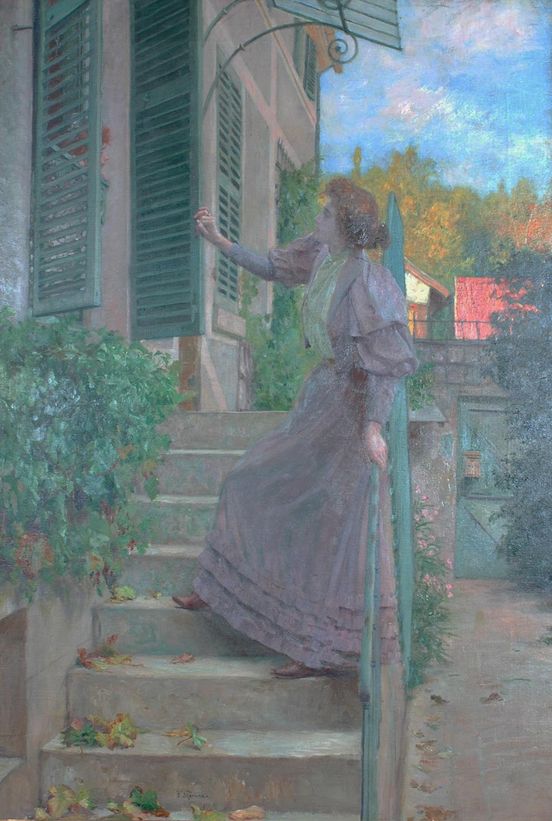| Genre | Painting |
| Materials | Oil on canvas |
| Size | 100 x 69 cm |
| Signature | signed bottom center: F. Skarbina |
Restored with the support of the Ernst von Siemens Kunststiftung
Research status
Provenance is unclear and research continues.
“Happy Hours” in Venice
“The painting ‘Happy Hours’ reveals Skarbina at his best. There is a poetry in the very paint, a characterisation in the atmosphere, at which we cannot marvel enough; such paintings, like music, stand above verbal tributes, and only the sense through and for which they were created has the power to grasp them.”
[n. n.] Die Berliner auf der Großen Berliner Kunstausstellung, in: Das Atelier, 1894
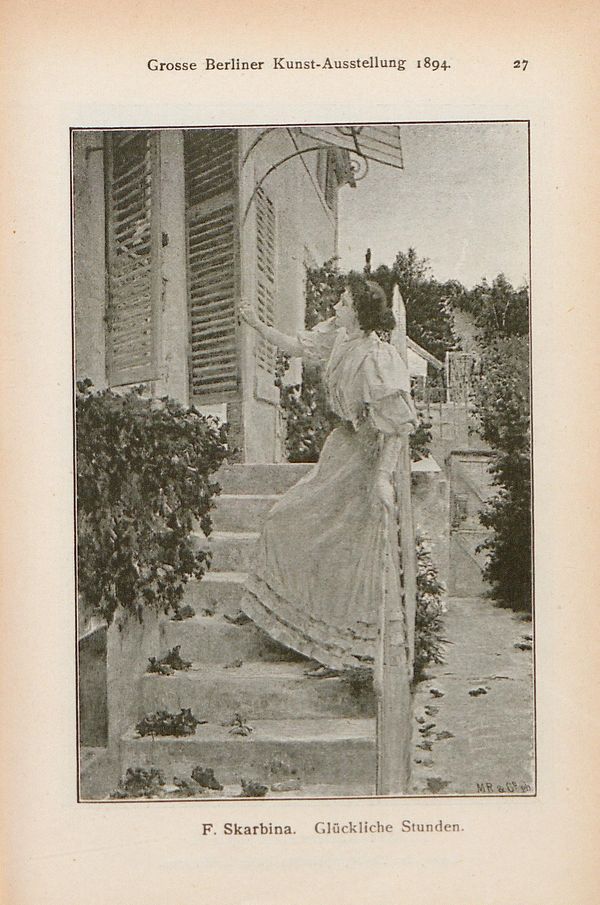
In 1894 “Happy Hours” was shown at the Great Berlin Art Exhibition. This is the entry in the accompanying catalogue.
Catalogue of the Great Berlin Art Exhibition. 1894, p. 27.
Franz Skarbina had already entered his “Happy Hours” for the Great Berlin Art Exhibition in 1894. Then, from 1 April 1895, the painting went on show at the First International Art Exhibition in the city of Venice – from which evolved the Biennale di Venezia still held today. Under its translated title “Ore Felici”, it was one of two works that Skarbina submitted for the exhibition.
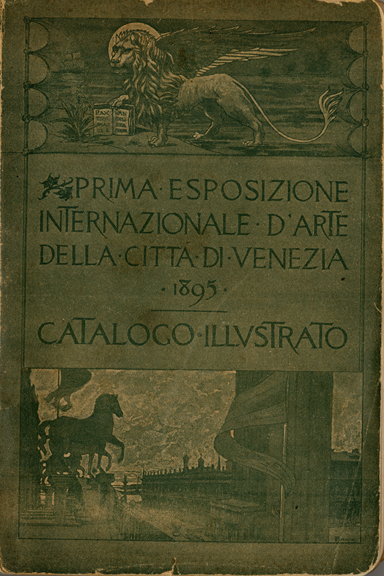
The catalogue for the First International Art Exhibition in Venice with the entry on Franz Skarbina
Catalogue cover, First International Art Exhibition, Venice 1895
© Courtesy Archivio Storico della Biennale di Venezia, ASAC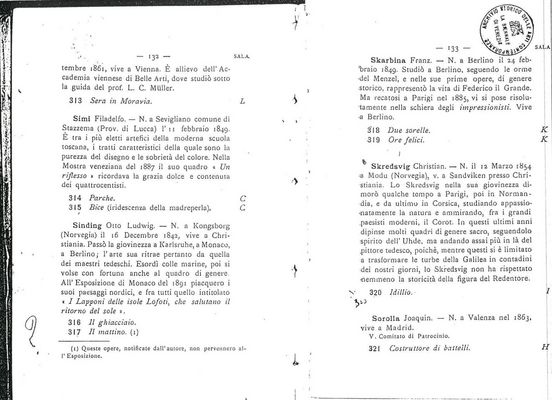
Catalogue for the First International Art Exhibition, Venice
© Courtesy Archivio Storico della Biennale di Venezia, ASACThe title on the frame is hard to make out now. Skarbina wrote it himself. However, the back yields few other clues to places where this painting may have been. The thin leftover of a sticker on the left margin might be from the Munich Secession show in 1896. That exhibition catalogue records the painting and marks it for sale. Once again, there is a photograph.
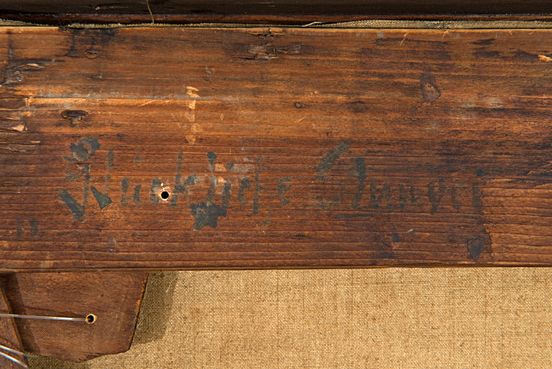
The title on the top strip of the frame
Franz Skarbina, Glückliche Stunden, 1893 (Back, Detail)
© Repro: Kai-Annett Becker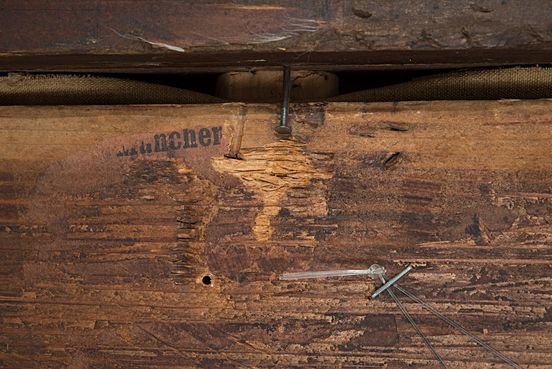
The sticker indicating “Munich”
Franz Skarbina, Glückliche Stunden, 1893 (Back, Detail)
© Repro: Kai-Annett Becker
Exhibition catalogue for the Munich Secession in 1896
© Zentralinstitut für KunstgeschichteIt has not been established when “Happy Hours” was first sold or why an owner removed all the traces that might have provided information about the painting’s journey.
Franz Skarbina’s documentary estate was consumed by fire in the Second World War. The art dealer Volker Westphal, who sold the painting to the Berlinische Galerie in 1983, died in 2017. The surviving papers in his company archive provide no details about who brought him the painting to sell in the early 1980s. This makes it extremely hard for provenance research to lay any foundations for future enquiries.
